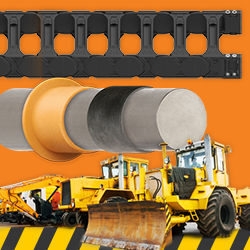How Technology is Helping with Timing Crop Harvesting
.jpg)
Once a large portion of the human race stopped living as nomadic hunter/gatherers, we shifted our focus to agriculture. Over time, food production has turned into a $3.18 trillion dollar industry in the United States alone. That means massive fields planted and enormous herds often too large for farmworkers to assess in any detail. This often means things like optimum harvesting time get overlooked, with supervisors deciding to harvest early and ripen crops in transit instead of waiting too long and risking their crops rotting in the fields.
New technologies are emerging to help make the agriculture industry more efficient. How are these new devices helping farms better time their harvests?
Keeping Up with Growing Demand
Right now, in the second half of 2021, there are approximately 7.8 billion people living on the planet. If that seems like a lot, then you might balk at estimates that put the global population at upwards of 10 billion by 2050. The UN predicts that 68% of the world’s population will live in urban centers and megacities by that time, which means fewer people growing their own food and increased demand on the agricultural industry.
Right now, one failed crop won’t result in a global famine — though there are still parts of the world that are facing starvation — farmers still need to figure out the best way to keep up with this mind-boggling demand.
Finding That Perfect Time to Harvest
One tool for keeping up with this demand is to choose the optimum time to harvest for maximum yield. This can be tricky, as similar crops might not mature at the same rate from year to year. Even relatively straightforward crops like hay mature faster or slower depending on the amount of sun they receive, the ambient temperature and the amount of wind and water in the atmosphere.
New technology is beginning to emerge that makes it easier for farmers to figure out the optimal time to harvest their crops. Let’s take a look at some of these new devices and how they’ll impact the agricultural industry moving forward.
Tracking and Predicting the Weather
Like that hay we mentioned earlier, many crops require the perfect balance of sun, temperature, rain and humidity in order to thrive. Hay prefers dryer climates, while crops like okra and cherry tomatoes prefer hotter, more humid regions. Having a comprehensive understanding of the climate and weather patterns in an area can help farmers make informed decisions, but what if you could accurately predict what the weather might be like in the future. We’re not talking about the science of meteorology here, though that plays a part. We’re talking about predictive analytics and artificial intelligence.
AI and machine learning use data collected from previous years to paint a clear and accurate picture of what the weather might look like in the seasons to come. This isn’t magic or fortune-telling but rather supercomputers sorting through data and discovering patterns that might otherwise be missed. As weather patterns continue to change, thanks to global warming, these tools will be more than invaluable. They will become essential for anyone who seeks to continue farming.
Monitoring Crops in Real-Time
As crops spend months in the fields, any number of things can go wrong. Farmers may find themselves contending with pests, disease, or poor weather conditions that can threaten the viability of a crop. Real-time monitoring, in the form of soil and plant sensors, can help agriculturists respond to these threats in a timely manner. Instead of waiting until a disease or pest decimates a large portion of the crop, they can catch it while it’s still easy to contain.
This same technology can even alert farmers when their crops are approaching peak ripeness, so they can better plan their harvesting times. This removes the guesswork, as well as the time it takes to inspect the fields in person and makes it easier to deliver the best crop possible without risking plants getting overripe or rotting in the field.
The Future of Tech in Agriculture
Agriculture has been one of the slowest fields to adopt new technology, but as demand increases, these new tools can help take up the slack.
Comments (0)
This post does not have any comments. Be the first to leave a comment below.
Featured Product

